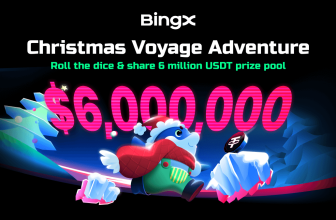
Crypto is full of loud narratives and hype-driven tokens, but every so often, the real action comes from major projects that have been quietly building in the background. That’s exactly what caught the attention of an analyst from Altcoin Buzz YouTube channel.
Instead of chasing micro-cap gambles, he took a closer look at three established giants ZCash, Chainlink, and Stellar to see which one is showing the strongest momentum right now. His breakdown didn’t just compare fundamentals; it revealed one clear standout that appears to be gearing up for serious long-term growth.
What you'll learn 👉
ZCash Price Action Shows Unusual Strength
ZCash has shown one of the wildest turnarounds the analyst has seen in years. The ZEC token surged over 1,240% in just 3 months. The move is dramatic because the ZCash price stayed quiet for almost 7 years before waking up.
The analyst traced the shift to growing interest in privacy adoption. Shielded pool usage now sits around 30%, which equals about 4.8 million ZEC out of 16.4 million in circulation. That means more ZEC is being locked away with privacy tech, lowering liquid supply and tightening available tokens on the market.
ZCash uses strong cryptography through zero knowledge proofs, and the move to Halo Proving System in NU5 removed trusted setups. The analyst described this as a real upgrade that sharpened privacy and improved efficiency.
The ZEC token carries a clear supply structure. A cap of 21 million mirrors Bitcoin, and the rise in shielded usage adds a scarcity angle. The current ZEC price sits around $552 with a market cap of about $8.8 billion. Circulating supply sits near 78%.
The analyst still noted risks. Privacy-focused tokens face regulatory pressure and listing challenges. He also mentioned that KYC and AML requirements make privacy tech a difficult zone for many exchanges. Even with these concerns, he believes ZCash is showing impressive strength during a weak market.
Chainlink Faces A Tough Quarter Despite Deep Utility
Chainlink plays a central role in the crypto ecosystem. The analyst described LINK as a tool that quietly powers data feeds, oracles, and cross-chain messaging in multiple sectors. He called it one of his personal favorites because it delivers real-world usage instead of hype.
Chainlink continues to expand into enterprise and tokenization. Its CCIP system now connects over 70 chains, a milestone the analyst believes adds long-term utility. The project also generates revenue through its services, and the LINK token has a fixed cap of 1 billion. About 70% sits in circulation with a predictable unlock schedule of 7% each year until 2027.
A notable point from the analyst revolves around the LINK reserve. Chainlink adds more LINK to its reserve every week with no short-term plans to use it. This effectively reduces circulating supply and supports the scarcity angle.
The risks, according to the analyst, center on ecosystem dependence. Lower usage by DeFi protocols could reduce LINK demand. Competition in the oracle space could also impact future dominance.
The LINK price, however, took a hit. It dropped almost 50% over the last quarter, sitting around $12.56 as the analyst recorded his breakdown. He said the decline feels like a reflection of a weak market rather than any weakness in fundamentals. He personally sees the price as heavily discounted, though he made clear that this remains his own view, not investment advice.
Stellar Expands Use Cases Through RWAs And Global Payments
Stellar focuses on fast, low-cost transactions across borders, and its network has grown into an important infrastructure layer for international transfers. The analyst explained how Stellar connects different financial systems while also expanding into tokenization.
He pointed to a $200 million RWA issuance announced by MercadoBitcoin as an example of what the chain can support. Partnerships with Paxos, Ondo, Etherfuse, and SGForce add more weight to the ecosystem. Stellar also aims to increase RWA value held on-chain to $3 billion within a year, something the analyst described as ambitious yet meaningful.
Stellar introduced the PYUSD stablecoin on-chain. Tokenized US treasuries also exist within its network. The ecosystem carries support from the Stellar Development Foundation, which gives it structure and long-term direction.
The analyst still sees challenges. The supply of the XLM token is large at 50 billion. Only 62% is in circulation even after almost 11 years. He compared this to XRP and mentioned that the remaining supply gives the team the ability to release more tokens into the market. Competition in cross-border payments is also strong, with Ripple and others pushing similar goals.
The XLM price sits around $0.24 with a market cap near $7.9 billion. The token fell more than 37% in the last quarter.
Read Also: Starknet (STRK) Price Revisits a Major Rally Zone: Here’s What to Expect Next
Why The Analyst Sees ZCash As The Strongest Candidate
The analyst closed his comparison by weighing the strengths of all three projects. He admitted his long-time preference for Chainlink but stepped back to look purely at performance, demand patterns, and the direction of each project.
His view pointed toward ZCash. The ZEC price surge of more than 1,000% over 3 months stood out as a level of growth unmatched by LINK and XLM. He also emphasized the renewed push toward privacy, the rise of shielded usage, and the improvements in ZCash’s underlying technology.
He still believes LINK remains a strong project and plans to continue buying at the current price. Yet his final pick for strongest long-term growth potential in this comparison went to ZCash. Crypto continues to shift quickly, and these three tokens show different paths that large caps can take.
Subscribe to our YouTube channel for daily crypto updates, market insights, and expert analysis.








